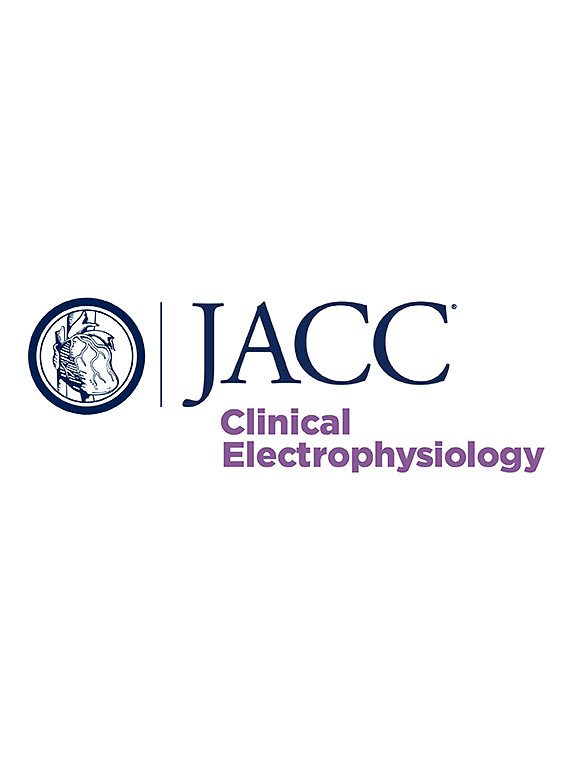人造二尖瓣置换术后风湿性心脏病相关心房颤动的直接口服抗凝剂。
IF 7.7
1区 医学
Q1 CARDIAC & CARDIOVASCULAR SYSTEMS
引用次数: 0
摘要
背景:对于患有风湿性二尖瓣狭窄的心房颤动(房颤)患者,直接口服抗凝药(DOACs)在预防缺血性和血栓栓塞事件方面的疗效可能并不理想。然而,在使用生物人工瓣膜进行二尖瓣置换术(MVR)后,这些药物的安全性和有效性尚不明确:本研究旨在评估生物瓣膜置换术后风湿性心脏病(RHD)相关房颤患者使用 DOACs 与华法林的安全性和有效性:我们对接受生物假体 MVR 的风湿性心脏病和房颤患者进行了观察分析。主要有效性和安全性结果分别为缺血事件和大出血。次要结果包括全因死亡率、心脏血栓形成、心肌梗死和全因住院。为考虑基线特征和合并症的差异,进行了倾向评分匹配:共确定了3950名患者,其中76%在MVR后使用华法林,24%在MVR后使用DOAC。与华法林组相比,DOAC 组的基线合并症和既往心血管手术负担较重。倾向评分匹配平衡了1832名患者(每组916人)的基线特征,他们的平均年龄为69岁。在5年的随访中,与华法林相比,DOAC的大出血发生率较低(HR:0.76;95% CI:0.62-0.94),缺血性事件、死亡率、心脏血栓形成、心肌梗死或住院治疗方面没有显著差异:结论:在假体置换中风术后的RHD相关房颤患者中,DOACs与较低的大出血相关,且疗效相当,表明其有可能替代华法林。有必要进一步开展随机对照试验,以在这一人群中验证这些发现。本文章由计算机程序翻译,如有差异,请以英文原文为准。
Direct Oral Anticoagulants for Rheumatic Heart Disease-Associated Atrial Fibrillation Post-Bioprosthetic Mitral Valve Replacement
Background
The efficacy of direct oral anticoagulants (DOACs) in preventing ischemic and thromboembolic events may be suboptimal in atrial fibrillation (AF) patients with rheumatic mitral stenosis. However, their safety and effectiveness after mitral valve replacement (MVR) using bioprosthetic valves is unclear.
Objectives
This study sought to evaluate the safety and effectiveness of DOACs vs warfarin among patients with rheumatic heart disease (RHD)-associated AF after bioprosthetic MVR.
Methods
We performed an observational analysis identifying patients with RHD and AF who underwent bioprosthetic MVR. Primary effectiveness and safety outcomes were ischemic events and major bleeding, respectively. Secondary outcomes included all-cause mortality, cardiac thrombosis, myocardial infarction, and all-cause hospitalization. Propensity score matching was performed to account for the differences in baseline characteristics and comorbidities.
Results
A total of 3,950 patients were identified; 76% were on warfarin and 24% on DOAC post-MVR. The DOAC group had a higher burden of baseline comorbidities and prior cardiovascular procedures compared with the warfarin group. The propensity score matching balanced baseline characteristics in 1,832 patients (916 in each group), with a mean age of 69 years. At the 5-year follow-up, DOACs were associated with a lower incidence of major bleeding compared with warfarin (HR: 0.76; 95% CI: 0.62-0.94), with no significant difference in ischemic events, mortality, cardiac thrombosis, myocardial infarction, or hospitalization.
Conclusions
Among patients with RHD-associated AF patients post–bioprosthetic MVR, DOACs are associated with lower major bleeding and comparable effectiveness, indicating a potential alternative to warfarin. Further randomized controlled trials are warranted to validate these findings in this population.
求助全文
通过发布文献求助,成功后即可免费获取论文全文。
去求助
来源期刊

JACC. Clinical electrophysiology
CARDIAC & CARDIOVASCULAR SYSTEMS-
CiteScore
10.30
自引率
5.70%
发文量
250
期刊介绍:
JACC: Clinical Electrophysiology is one of a family of specialist journals launched by the renowned Journal of the American College of Cardiology (JACC). It encompasses all aspects of the epidemiology, pathogenesis, diagnosis and treatment of cardiac arrhythmias. Submissions of original research and state-of-the-art reviews from cardiology, cardiovascular surgery, neurology, outcomes research, and related fields are encouraged. Experimental and preclinical work that directly relates to diagnostic or therapeutic interventions are also encouraged. In general, case reports will not be considered for publication.
 求助内容:
求助内容: 应助结果提醒方式:
应助结果提醒方式:


